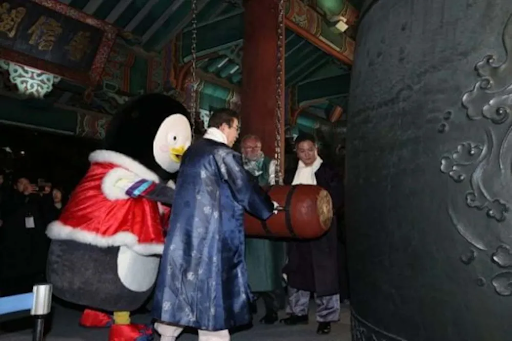Korean New Year's Day Traditions: Tteokguk and More
In Korea,
January 1st is a day filled with cultural significance and meaningful traditions. Among these, the symbolic bowl of tteokguk (rice cake soup) and the practices surrounding New Year’s Eve and Day make the holiday uniquely Korean. This blog will explore these customs in detail, including the preparation of tteokguk and the various ways Koreans welcome the new year.
1. Tteokguk: The Symbolic Rice Cake Soup
Tteokguk is a must-have dish on New Year’s Day in Korea. It’s not just a hearty, warm soup but also a dish deeply embedded with symbolism and cultural meaning.
1.1 Symbolism of Tteokguk
Growing a Year Older: In Korea, eating a bowl of tteokguk on January 1st symbolizes growing one year older. This is often a playful tradition where people joke, “Have you eaten your tteokguk yet?” to signify their age in the new year.
Purity and Longevity: The white broth represents purity, while the oval-shaped slices of rice cake symbolize longevity and wealth.
1.2 How Tteokguk is Made
Tteokguk preparation is simple yet full of flavor. Here's a quick overview.
Ingredients: Rice cake slices, beef, water, eggs, green onion, soy sauce, minced garlic, sesame oil, and black pepper.
Steps: Sauté beef in sesame oil, add water to make a savory broth, and season with soy sauce and garlic. Add soaked rice cakes and cook until tender. Pour in beaten eggs while stirring, then garnish with chopped green onions and a dash of black pepper.
This easy recipe showcases the warmth and significance of tteokguk, making it a perfect dish to start the new year.
2. New Year's Eve Traditions: 송구영신예배 and Beyond
2.1 송구영신예배 (A New Year’s Eve Service)
Meaning Behind the Name
The term Songguyongsin comes from the Chinese characters 送舊迎新, meaning “farewell to the old, welcome the new.” It reflects the dual purpose of these services: to reflect on the past year and to pray for blessings in the year ahead.
Practice
Held in churches across Korea, these services begin late on December 31st and conclude after midnight, marking the first prayer of the new year.
They are a time for gratitude, repentance, and setting intentions for the future.
2.2 Bell-Ringing Ceremony (제야의 종소리)
At midnight, Korea marks the new year with the ringing of the Bosingak Bell in Seoul. This 33-time ringing symbolizes hope, renewal, and prosperity.
Thousands gather in Jongno to witness this event, while many watch it live on television.
2.3 Watching the First Sunrise (해돋이)
For those who prefer nature over ceremonies, watching the first sunrise of the year is a popular activity.
Popular destinations include Jeongdongjin Beach, Seongsan Ilchulbong on Jeju Island, and Gangwon Province’s mountains. Witnessing the sunrise is believed to bring good luck and positivity for the coming year.
3. Why These Traditions Matter
3.1 Community and Family Bonding
Eating tteokguk with family, attending church services, or gathering to watch the bell ceremony brings people together.
3.2 Reflection and Renewal
The traditions emphasize reflecting on the past while embracing new beginnings, fostering a sense of hope and purpose.
3.3 Cultural Legacy
These practices preserve Korea’s rich cultural history, offering a unique perspective on how Koreans blend the old with the new.
4. How to Experience Korea’s New Year Traditions
If you’re in Korea or want to embrace its culture during the New Year
Try Making Tteokguk: Gather the ingredients and try making your own bowl. It’s a delicious way to experience Korean culture.
Join a Midnight Ceremony: Attend a local event like the Bosingak bell-ringing or watch it on TV.
Catch the First Sunrise: Plan a trip to a scenic spot and make a wish as the sun rises.
Explore Local Customs: Visit a Korean church or talk to locals about their New Year’s traditions.
5. Conclusion
Korean New Year’s traditions, from the symbolic bowl of tteokguk to the communal celebrations of 송구영신예배 and 해돋이, offer a glimpse into the nation’s unique way of embracing new beginnings.
Whether you’re enjoying a hearty meal with family, reflecting in a midnight service, or marveling at the first sunrise, these customs highlight themes of renewal, community, and gratitude.
Immerse yourself in these traditions and welcome the new year with the spirit of hope and unity that defines Korean culture. Happy New Year! 🎉



댓글
댓글 쓰기